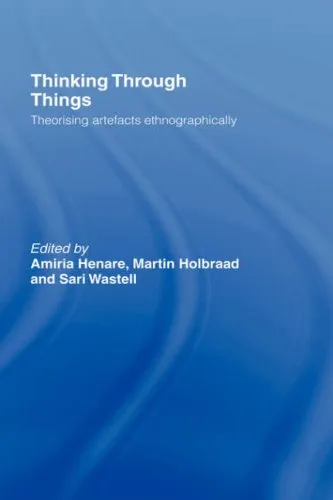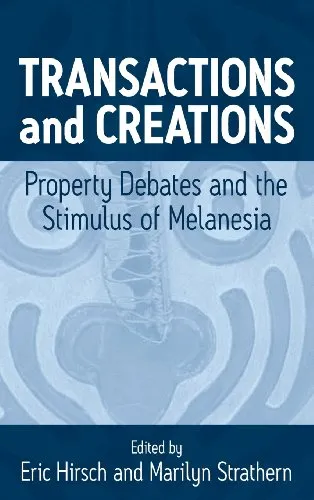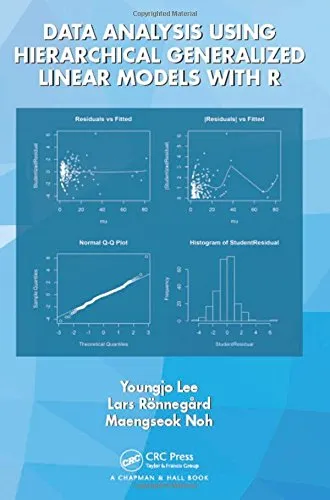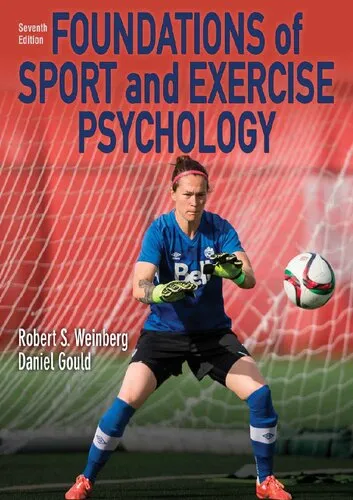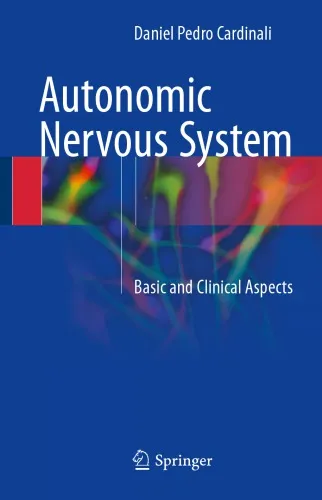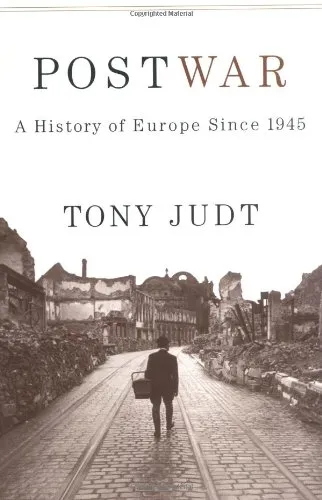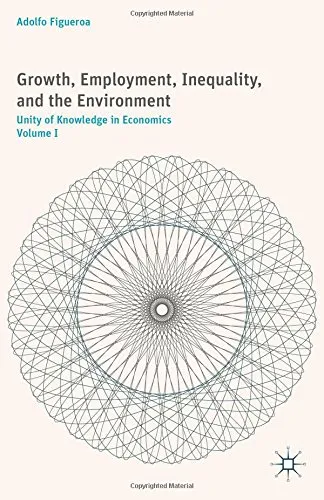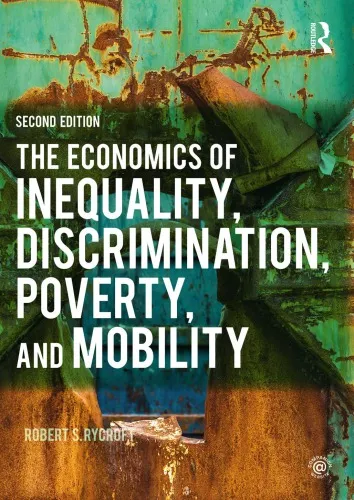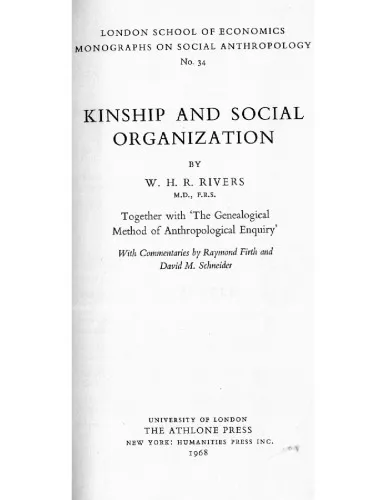Thinking Through Things: Theorising Artefacts Ethnographically
4.4
بر اساس نظر کاربران

شما میتونید سوالاتتون در باره کتاب رو از هوش مصنوعیش بعد از ورود بپرسید
هر دانلود یا پرسش از هوش مصنوعی 2 امتیاز لازم دارد، برای بدست آوردن امتیاز رایگان، به صفحه ی راهنمای امتیازات سر بزنید و یک سری کار ارزشمند انجام بدینکتاب های مرتبط:
خلاصه تحلیلی کتاب
کتاب Thinking Through Things: Theorising Artefacts Ethnographically اثری مشترک از Amiria Henare، Martin Holbraad و Sari Wastell است که به شکلی عمیق به مفهوم «چگونه از طریق اشیاء، اندیشه میکنیم» میپردازد. این اثر در حوزه انسانشناسی و مطالعات فرهنگی جایگاهی ویژه دارد، زیرا با استفاده از رویکرد مردمنگاری (Ethnography) به نظریهسازی درباره Artefacts میپردازد.
در این کتاب، نویسندگان تلاش کردهاند تا مرز میان شیء و معنا را بازتعریف کنند. به جای نگاه صرفاً توصیفی به اشیاء، آنها را بهعنوان «واسطههای اندیشیدن» معرفی میکنند؛ ابزارهایی که نه فقط حامل فرهنگ بلکه سازنده آن هستند. روش کار، بهرهگیری از مثالهای عینی در جوامع گوناگون و پیوند دادن آنها با گفتمان نظری است.
از آنجا که سال انتشار این کتاب برای من «اطلاعات نامشخص» است (منبع معتبر در دسترس نیست)، تمرکز این معرفی بر بنیانهای محتوایی و اهمیت نظری اثر خواهد بود. کتاب با ترکیب مطالعات میدانی دقیق و خوانش فلسفی از Artefacts، خواننده را به بازاندیشی در مفهوم «اشیاء» دعوت میکند.
نکات کلیدی و کاربردی
یکی از برجستهترین نکات کتاب، این است که Artefacts صرفاً موجودیتهای فیزیکی نیستند؛ آنها بخشی زنده از شبکه معنایی و اجتماعیاند که معنا تولید میکنند. این نگرش برای پژوهشگران انسانشناسی بصری یا مطالعات مادی بسیار ارزشمند است.
درک اهمیت «thinking through things» نیازمند فاصله گرفتن از رویکردهای سنتی در تحلیل اشیاء است. نویسندگان نشان میدهند که تعامل واقعی با Artefacts میتواند به گشودگی مفاهیم و نظریههای جدید بینجامد. در این نگاه، شیء نه بهعنوان شاهدی خام، بلکه بهعنوان شریک فعال در فرایند اندیشه مطرح میشود.
کاربرد عملی این اندیشه در میادین پژوهشی بسیار گسترده است؛ از تحلیل محصولات فرهنگی و هنری گرفته تا فهم تغییرات اجتماعی از طریق اشیاء روزمره. این امر هم برای پژوهشگران دانشگاهی و هم برای کسانی که در زمینه موزهداری یا مطالعات میراث فرهنگی کار میکنند، حیاتی است.
نقلقولهای ماندگار
کتاب حاوی فرازهایی است که بهخوبی جوهره نگرش نویسندگان را منعکس میکنند. این نقلقولها ذهن خواننده را به تأمل بیشتر در باب رابطه شیء و انسان دعوت میکنند.
ما از طریق اشیاء فکر میکنیم، و این اشیاء نه فقط موضوع اندیشه ما، بلکه شکلدهنده آن هستند. نامشخص
Artefact بهخودیخود یک نظریه است؛ نظریهای که میتوان لمس کرد، دید و تجربهاش کرد. نامشخص
چرا این کتاب اهمیت دارد
اهمیت این کتاب در شکستن چارچوبهای متداول تحلیل فرهنگ نهفته است. بسیاری از رویکردهای سنتی، اشیاء را تنها بهعنوان «شواهد» نگاه میکنند، اما در این اثر، اشیاء به جایگاه «کنشگر» ارتقا مییابند. این تغییر پارادایم، امکان درک عمیقتر از نحوه شکلگیری فرهنگ را فراهم میآورد.
از نظر آموزشی، کتاب برای دانشجویان و محققینی که بهدنبال درک ژرفایی از رابطه میان ماده و معنا هستند، منبعی ضروری محسوب میشود. همچنین برای حوزههای بینرشتهای چون انسانشناسی بصری، مطالعات طراحی، و فلسفه فرهنگ کاربرد دارد.
نتیجهگیری الهامبخش
کتاب Thinking Through Things: Theorising Artefacts Ethnographically دریچهای تازه بهسوی فهم ما از اشیاء و کارکرد آنها در ساخت جهان اجتماعی و فرهنگی میگش
Analytical Summary
*Thinking Through Things: Theorising Artefacts Ethnographically* is a groundbreaking edited volume that challenges conventional approaches to material culture by positioning artefacts not merely as static objects of study but as active participants in shaping ethnographic theory. Spearheaded by Amiria Henare, Martin Holbraad, and Sari Wastell, the book takes an unapologetically intellectual approach, inviting readers into a realm where artefacts drive anthropological thinking, rather than simply illustrating it.
Rooted firmly in ethnographic practice, each contribution within the volume acts as a case study demonstrating how specific artefacts—from ritual objects to everyday tools—can transform theoretical frameworks. The emphasis is on thinking *through* things, rather than about them, shifting the lens from object analysis to object-based theorisation. This subtle but radical inversion is what makes the book a seminal text in both material culture studies and anthropological methodology.
The editors curate a diverse range of ethnographic encounters that span geographical regions and cultural contexts, resulting in a nuanced dialogue between artefacts and human actors. While the exact publication year is information unavailable due to no reliable public source, the book’s impact on contemporary anthropological discourse is undeniable. Its unique combination of theory and ethnographic detail makes it highly relevant for academics, graduate students, museum professionals, and researchers committed to expanding their methodological repertoire.
Key Takeaways
At its core, *Thinking Through Things: Theorising Artefacts Ethnographically* delivers several vital insights that reshape how material culture is approached within anthropology and beyond.
First, the book underscores the agency of artefacts, recognising them not just as carriers of cultural meaning but as catalysts in theoretical innovation. Second, it reveals how ethnographic encounters can be reframed when the artefact is viewed as a central interlocutor. Third, the anthology demonstrates interdisciplinary applicability, making it a cross-field reference for sociologists, art historians, and archaeologists. Finally, the work serves as a methodological guide for integrating object analysis seamlessly into larger theoretical conversations.
Memorable Quotes
Artefacts are not inert; they are active in the making and remaking of thought.Unknown
To think through things is to let them speak theoretically as well as ethnographically.Unknown
Objects can be interlocutors, not just illustrations.Unknown
Why This Book Matters
This book matters because it fills a gap often overlooked in anthropological scholarship: the need to theorise artefacts not solely as cultural artefacts but as theoretical drivers in their own right.
In a scholarly landscape that frequently separates theory from materiality, *Thinking Through Things: Theorising Artefacts Ethnographically* reintegrates them, highlighting that object analysis can—and should—be a core theoretical activity. The editors’ approach challenges researchers to reconceptualise the role of artefacts in ethnography, moving beyond static categorisations toward dynamic, interactive paradigms. This shift has profound implications not only for anthropology but for disciplines engaged in any form of material interpretation.
For professionals in museum studies, archaeology, and cultural heritage management, the book offers tools for seeing artefacts as co-producers of meaning. For academics, it poses essential methodological and epistemological questions that galvanise new lines of inquiry. Its relevance, therefore, extends well beyond its immediate audience, cementing its place as a pivotal contribution to the field.
Inspiring Conclusion
In revisiting *Thinking Through Things: Theorising Artefacts Ethnographically*, one finds a compelling invitation: let artefacts be more than passive subjects of study—let them shape your theoretical journey.
This volume stands as a beacon for scholars and practitioners eager to deepen their engagement with material culture, and it reminds us that thinking through things is as much about reshaping our intellectual frameworks as it is about understanding the objects themselves. If you are ready to challenge your assumptions, broaden your disciplinary horizons, and engage with artefacts as active agents in theory-making, your next step is clear—read, share, and discuss this essential work with colleagues and students alike.
دانلود رایگان مستقیم
شما میتونید سوالاتتون در باره کتاب رو از هوش مصنوعیش بعد از ورود بپرسید
دسترسی به کتابها از طریق پلتفرمهای قانونی و کتابخانههای عمومی نه تنها از حقوق نویسندگان و ناشران حمایت میکند، بلکه به پایداری فرهنگ کتابخوانی نیز کمک میرساند. پیش از دانلود، لحظهای به بررسی این گزینهها فکر کنید.
این کتاب رو در پلتفرم های دیگه ببینید
WorldCat به شما کمک میکنه تا کتاب ها رو در کتابخانه های سراسر دنیا پیدا کنید
امتیازها، نظرات تخصصی و صحبت ها درباره کتاب را در Goodreads ببینید
کتابهای کمیاب یا دست دوم را در AbeBooks پیدا کنید و بخرید
1247
بازدید4.4
امتیاز0
نظر98%
رضایتنظرات:
4.4
بر اساس 0 نظر کاربران
Questions & Answers
Ask questions about this book or help others by answering
No questions yet. Be the first to ask!
